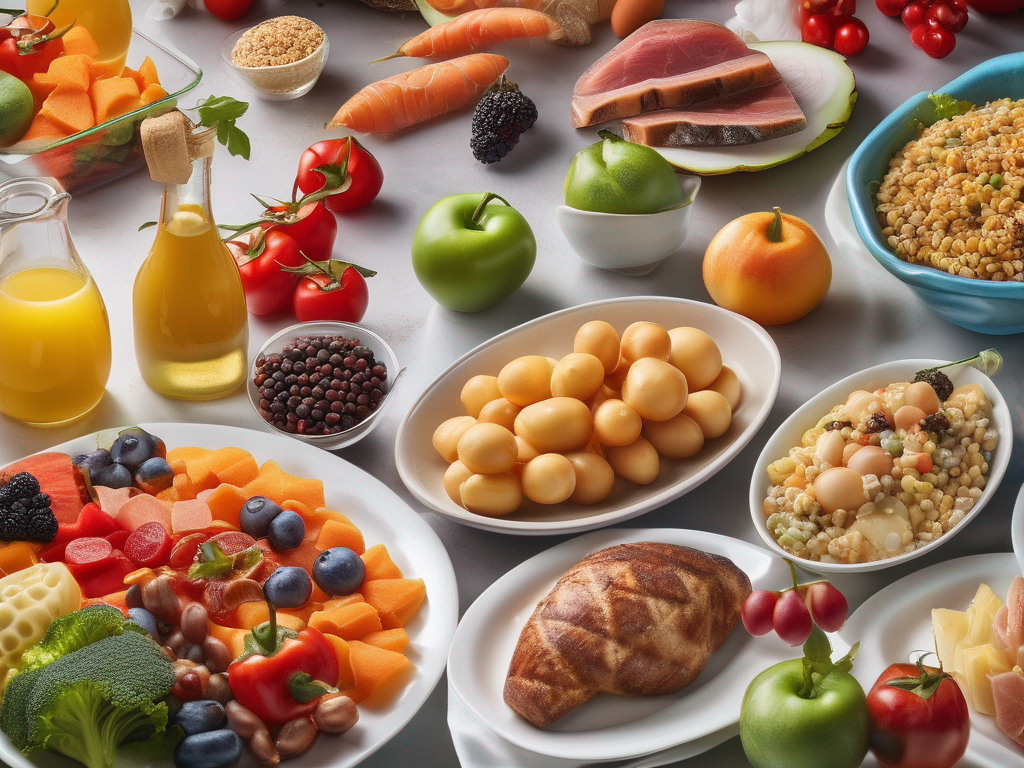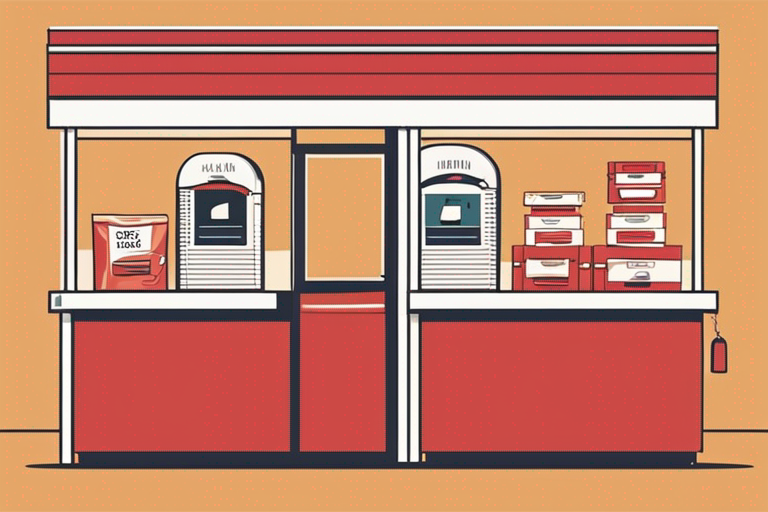
Making a Difference: All You Need to Know About Post Office Food Drives
Get Your Free Food Safety Cheat Sheet
30 most common foods with instant answers. Print it and stick it on your fridge—completely free!
# Making a Difference: All You Need to Know About Post Office Food Drives
In today's fast-paced world, it's easy to forget that not everyone has access to a reliable source of food. Food insecurity is a pressing issue that affects millions of people around the world. One way to help combat this problem is by participating in post office food drives. These drives are organized by postal services to collect non-perishable food items for those in need. In this blog post, we will explore everything you need to know about post office food drives, including practical tips and food safety information.
## What is a Post Office Food Drive?
Post office food drives are community-driven initiatives that aim to collect non-perishable food items for local food banks and pantries. The concept is simple: postal customers are encouraged to donate items such as canned goods, pasta, rice, and other non-perishable foods. Postal workers then collect these donations during their regular mail delivery routes and bring them back to the post office for sorting and distribution.
### How Does It Work?
- Postal customers receive a flyer or email announcing the food drive and providing a list of suggested items to donate.
- Customers can leave their donations in a designated area near their mailbox or bring them to the post office directly.
- Postal workers collect the donations during their routes and bring them back to the post office for sorting.
- The food items are then distributed to local food banks and pantries to help those in need.
## Why Participate in a Post Office Food Drive?
Participating in a post office food drive is a simple yet impactful way to give back to your community. Here are some reasons why you should consider getting involved:
1. **Help Those in Need**: Your donations can make a real difference in the lives of individuals and families struggling with food insecurity.
2. **Community Involvement**: Food drives bring communities together to support a common cause and foster a sense of unity.
3. **Raise Awareness**: By participating in a food drive, you can help raise awareness about food insecurity and the importance of giving back.
### Tips for a Successful Food Drive
- **Spread the Word**: Use social media, flyers, and word of mouth to encourage others to participate.
- **Set Goals**: Establish donation goals to motivate participants and track progress.
- **Offer Incentives**: Consider offering small incentives or rewards for those who donate.
- **Volunteer**: Offer to help sort and pack donations at the post office to show your support.
## Food Safety Tips for Donations
When donating food items to a post office food drive, it's essential to ensure the safety and quality of the items you donate. Here are some food safety tips to keep in mind:
1. **Check Expiration Dates**: Only donate non-perishable items that are within their expiration dates.
2. **Avoid Dented or Damaged Cans**: Do not donate canned goods that are dented, rusted, or damaged as they may be compromised.
3. **Choose Healthy Options**: Opt for low-sodium, low-sugar, and nutrient-dense food items when possible.
4. **Pack Items Securely**: Make sure to pack the items securely to prevent spills or breakage during transportation.
## Real-Life Scenarios
To illustrate the impact of post office food drives, let’s look at a few scenarios where participation can make a significant difference.
### Scenario 1: The Single Parent
Meet Sarah, a single mother of two who recently lost her job due to company downsizing. With bills piling up and limited resources, Sarah struggles to provide the necessary meals for her children. One day, she notices a flyer for a post office food drive in her neighborhood. Inspired by the initiative, she takes the time to gather non-perishable items from her pantry to contribute. While she may not have much to give, her effort helps local food banks support families like hers.
### Scenario 2: The College Student
John is a college student living on campus. Although he receives financial aid, it barely covers his living expenses. One evening, he comes across a flyer for the post office food drive and remembers how he had to skip meals to save money. By donating some canned goods he has left over from his last grocery trip, he helps ensure that someone else won’t have to do the same. John feels a sense of camaraderie with those who might benefit from his small act of kindness.
### Scenario 3: The Elderly Neighbor
Mrs. Thompson is an elderly neighbor who lives alone. With limited mobility and a fixed income, she finds it difficult to regularly access food banks. Learning about the post office food drive, her friends and family rally to help. They gather items from their homes, donating them on her behalf. This not only ensures Mrs. Thompson has access to nutritious food but also reinforces the importance of community support, particularly for vulnerable populations.
## Scientific Context: Understanding Food Preservation
When participating in food drives, it's crucial to understand how food preservation works to ensure the safety of donated items. Non-perishable foods are specifically designed for long shelf lives through various methods such as:
- **Canning**: This method involves heating food in sealed containers, destroying harmful bacteria, and creating a vacuum seal that prevents new bacteria from entering.
- **Dehydration**: By removing moisture, foods are less likely to rot or develop bacteria. Items like dried fruits, pasta, and grains are excellent examples.
- **Freezing**: While not suitable for food drives, understanding that many foods can be frozen to extend their shelf life emphasizes the importance of freshness for items that are perishable.
Understanding these preservation methods not only helps in selecting items to donate but also gives insight into how food banks manage their inventory.
## Common Mistakes in Food Donation
Many people might not realize that donating food isn't as simple as dropping off whatever they have at home. Here are some common mistakes to avoid:
1. **Outdated Items**: People often donate expired products under the assumption that food banks will sort through and dispose of them. However, many organizations are unable to accept expired items due to liability issues.
2. **Incorrect Food Types**: Some donors assume that any food item is acceptable. However, foods requiring refrigeration or complex preparation may not be suitable for donation.
3. **Ignoring Food Safety Guidelines**: Not following food safety guidelines can lead to issues that jeopardize the health of those receiving the food. Always check for damages or compromised packaging before donating.
## Expert Insights: Professional Recommendations
Food safety experts recommend that donors familiarize themselves with the needs of local food banks. Many have specific requests for types of food or dietary preferences, including gluten-free or low-sodium options. Before your next donation, consider reaching out to your local food bank or checking their website for guidance. They may even offer insights on what items are most needed or what is currently in short supply.
Additionally, consider the environmental impact of your donations. Opting for packaging that is recyclable or made from sustainable materials can make your contribution more eco-friendly.
## Storage Methods for Donated Foods
If you're considering donating food items, it's essential to store them properly until they can be delivered. Here are some tips for safe storage:
- **Keep it Cool and Dry**: Store non-perishable items in a cool, dry place to prevent spoilage. Avoid areas with high humidity or temperature fluctuations.
- **Organize Donations**: Place items in clear bins or boxes, labeling them with their contents and expiration dates. This makes it easier for you to find and track items.
- **Rotate Your Stock**: Use the first-in, first-out method for food storage. When you buy new items, place them behind older ones to ensure that older products are donated first.
## Safety Warnings and Important Considerations
When participating in food drives, it's essential to be mindful of specific safety considerations:
1. **Allergies**: Be aware of common allergens such as nuts, gluten, dairy, and soy. Food banks often provide specific guidelines around allergen-free foods, as many recipients may have dietary restrictions.
2. **Canned Goods**: Always ensure that cans are in good condition. A good rule of thumb is that if you wouldn’t eat it, don’t donate it. Look for signs such as rust, swelling, or leakage.
3. **Children and Food Safety**: If children are involved in food donation activities, educate them on the importance of food safety. Discuss why certain items may not be suitable for donation and instill a sense of responsibility.
## Conclusion
Participating in a post office food drive is a meaningful way to support those in need in your community. By donating non-perishable food items and following food safety guidelines, you can make a positive impact and help alleviate food insecurity. Remember, even small contributions can make a big difference in someone's life. So, next time you see a flyer for a post office food drive, consider giving back and spreading a little kindness through the simple act of donating food. Together, we can work toward a hunger-free community, one can at a time!

Authoritative Food Safety References
These agencies and university labs inform every tip and health precaution we publish.
USDA FoodKeeper – Cold Storage Guidelines
Official refrigerator, freezer, and pantry timelines maintained by the U.S. Department of Agriculture.
Visit USDA FoodKeeperFDA Produce Safety Rule & Grower Guidance
Field-to-fridge handling practices that prevent contamination of fruits, vegetables, and leafy greens.
Visit FDA Produce SafetyCDC Foodborne Illness Prevention Hub
Surveillance-backed guidance on pathogens, symptoms, and steps to reduce foodborne illness risk.
Visit CDC Food SafetyUC Davis Postharvest Technology Center
University research detailing optimal storage atmospheres for produce after harvest.
Visit UC Davis PostharvestPenn State Extension – Home Food Preservation & Safety
Peer-reviewed extension bulletins on safe canning, chilling, and reheating practices.
Visit Penn State ExtensionWhat is a post office food drive and how does it work?
How can I participate in a post office food drive?
What types of food items are accepted during a post office food drive?
Can I donate money instead of food during a post office food drive?
How does a post office food drive help combat food insecurity in the community?
Get Your Free Food Safety Cheat Sheet
30 most common foods with instant answers. Print it and stick it on your fridge—completely free! Want more? Upgrade to the complete guide with 70+ foods.
Scan your food directly and get instant safety info using our AI-powered camera feature.